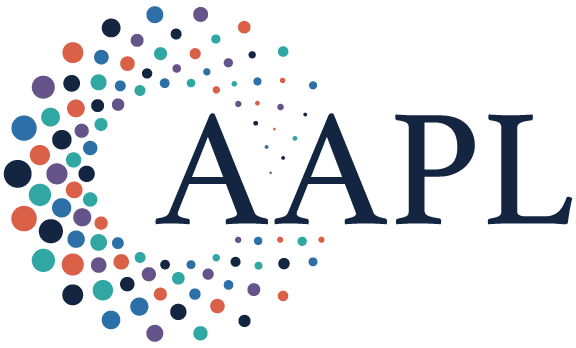As economic pressures gain a grip on medical practices and stress their resources, addressing the concept of opportunity cost and outsourcing becomes instrumental. Outsourcing is a business practice in which services or job functions are performed by a third party on a contract or ongoing basis. More specifically, business process outsourcing is a term used for outsourcing a specific business process task, such as payroll, billing, marketing, collections, and even human resources. A few of the more relevant advantages of outsourcing include lower costs (due to economies of scale or lower labor rates), increased efficiency, increased focus on core competencies, and access to technical skills or resources. Some potential pitfalls to outsourcing might include slower turnaround time, lack of business knowledge, language differences, cultural barriers, and lack of control.
An opportunity cost is the cost of an alternative that must be forgone to pursue a specific action or the benefits you could have received by pursuing an alternative activity. To illustrate an opportunity cost, imagine you were faced with the choice of either investing in “technology A” or “technology B.” In your due diligence, you must consider not only the cost of technology A, but also what you will lose by not investing in technology B. Although technology A might be less expensive than technology B, if technology B has a much higher return on the investment, technology A comes with a high opportunity cost.
Medicine is rapidly becoming a hybrid of medical care (patient care) and nonmedical care (e.g., business management, billing, marketing). Unfortunately, we cannot devote time to one without sacrificing time dedicated to the other unless resources are unlimited, which in today’s healthcare environment is highly unlikely. That is the applicable opportunity cost.
Economists use what’s known as a production possibility frontier (PPF) curve to explore where maximum growth potentials exist between alternatives, such as the example of technology A and technology B previously described. The PPF, also known as the production possibility curve, is a graphical representation used in economics to illustrate the maximum output combinations of two goods or services that an economy can offer or produce given its available resources and level of technology. The PPF demonstrates the trade-offs a society or a medical practice faces when allocating its limited resources between the production of different goods and services.
Here’s a description of the components and characteristics of a typical PPF curve:
Axis: The PPF is typically depicted on a graph with two axes. The horizontal axis represents the quantity of one good or service produced (e.g., healthcare services), and the vertical axis represents the quantity of another good or service produced (e.g., education services).
Curve: The PPF is represented by a downward-sloping curve, illustrating the inverse relationship between the production of the two goods. This downward slope reflects the principle of increasing opportunity cost, which states that as more resources are allocated to the production of one good, the opportunity cost of producing the other good increases.
Shape: The shape of the PPF curve typically is concave to the origin. This curvature reflects the diminishing marginal returns of resources. As resources are reallocated from one good to another, they are transferred from their most productive use to a less productive one, leading to a decreasing rate of return.
Efficiency: Points on the PPF curve represent production efficiency, where all available resources are fully utilized, and there is no waste. Points inside the curve represent inefficient production, indicating that resources are not fully utilized, whereas points outside the curve are unattainable given the finite level of resources and technology.
Shifts: Changes in resource availability or technological advancements can shift the entire PPF curve outward, indicating an increase in the economy’s potential to produce both goods. Conversely, factors such as resource depletion or technological regressions can shift the PPF inward, reducing the economy’s production capacity.
Opportunity cost: The slope of the PPF represents the opportunity cost of producing one additional unit of one good in terms of the quantity of the other good that must be sacrificed. This opportunity cost is reflected in the trade-offs inherent in resource allocation decisions.
Overall, the PPF curve provides a visual representation of the constraints and trade-offs faced by an economy in allocating its limited resources among competing uses, highlighting the concept of scarcity and the need for efficient resource allocation to maximize societal welfare.
Figure 1 offers a PPF curve for Acme Healthcare, using medical billing as an example. It demonstrates the “something has to give” concept of opportunity costs when examining the decision to outsource.
Figure 1. The production possibility frontier (PPF) curve demonstrates the relationship between attention to medical care (Y axis) versus attention to nonmedical care (X axis). With limited resources, one must go down as the other increases.
As shown in Figure 1, if the performance of patient-related medical tasks is plotted on the Y-axis and tasks that are unrelated to patient care (such as billing) are placed on the X-axis, you can only move “along” this PPF curve, because the practice has resources that are finite. As more of the practice’s resources are deployed toward patient care, fewer resources are available for nonmedical tasks. Performing the medical tasks becomes the opportunity cost for nonmedical tasks and vice versa.
Let us consider an alternative by looking at the true costs associated with the billing process of a medical practice. According to national averages, a full-time biller costs approximately $40,000 per year. It is estimated that one full-time biller is required for each $500,000 in collections.(1) So a practice generating $1 million in collections would require two full-time billers. But that accounts for only the human resource cost or the salaries of the two billers. Additional costs that must be considered include the cost of technology, training, and office space. Just as the PPF curve demonstrates the opportunity cost associated with medical care versus nonmedical care, there are opportunity costs associated with all the additional biller expenses. The total cost of billing could easily exceed 10% to 14% of collections.
And what if the billers were not specialized or they also handled other tasks within the practice? What if they needed to be trained to work as accurately and quickly as possible? The costs increase dramatically.
The real objective of maximizing growth is not achieved by “moving along” a PPF curve and giving up something to gain something else. Real growth comes from shifting the PPF curve to the right, which requires outsourcing.
In the PPF curve shown in Figure 2, Acme Healthcare decided to outsource their billing to “highly specialized and trained” billers. They did so for barely the cost associated with only their current total billing costs. But this specialization allows for an outward shift of the PPF curve so that at any given point of medical care, attention to nonmedical care tasks (which can potentially create additional revenue and quality) are much greater. Now that’s real economic growth!
Figure 2. When billing is outsourced, a new production possibility frontier (PPF) curve is created, allowing for more billing tasks to be performed without sacrificing medical tasks, including patient care.
In this example, because an outsourcing strategy was deployed, nothing was sacrificed when more attention was placed on billing. Essentially, a new PPF curve was created, allowing for more billing tasks to be performed without sacrificing medical tasks including patient care.
Whether you are considering billing, marketing, HR, or IT tasks, what are the costs of performing a nonmedical activity in-house?
Consider the following:
Human Resources (salary, benefits, and taxes);
Technology (e.g., computers, software, hardware, etc.);
Physical opportunity cost (i.e., office space in square feet × cost per square foot);
Human opportunity cost (i.e., losses on time spent on nonmedical care); and
Human error associated with nonspecialization.
Let’s assume Acme Healthcare generates $1 million in revenue and requires two full-time medical billers at an average salary of $40,000 each per year (the typical rate per Indeed.com).
When considering the costs associated with in-house billing, it’s important to include explicit costs of the billing staff (i.e., salary and benefits) as well as implicit costs (e.g., ongoing training needs, the office space allocated to the billing staff that could otherwise be used for something else, staff turnover costs, equipment, and supplies needed). As seen in Figure 3, the total costs of performing billing in-house would be $100,000 or 10% of the generated revenue. This cost does not take into consideration any deficiencies caused by lack of staff expertise. Outsourcing at 6.5% would save Acme Medical at least $35,000 annually.
Figure 3. Costs of performing billing in-house compared with costs of outsourcing billing at 6.5%.
Bottom Line: The next time you entertain the thought of outsourcing a business process, keep in mind the PPF curve and truly know your current costs and opportunity costs.
Reference
Bhatnagar R. What is the going rate for medical billing services? Neolytix. July 26, 2023. https://neolytix.com/what-is-the-going-rate-for-medical-billing-services/

